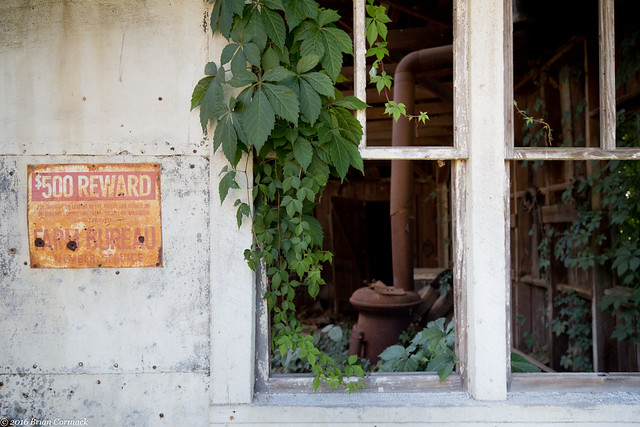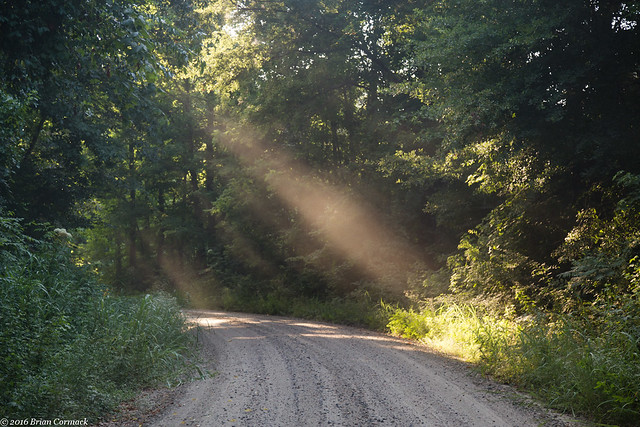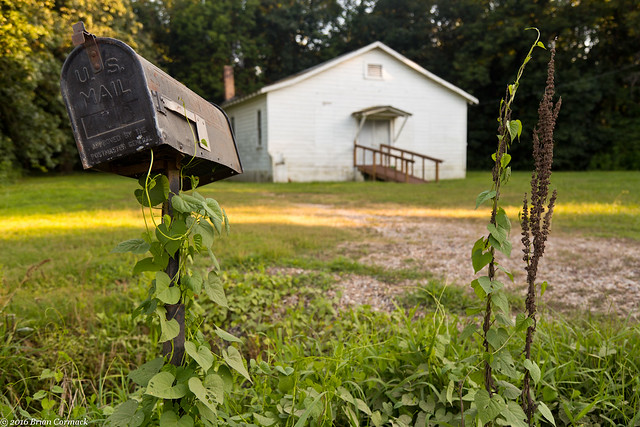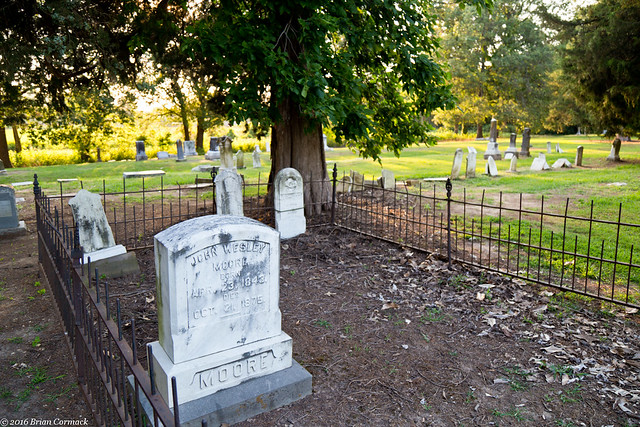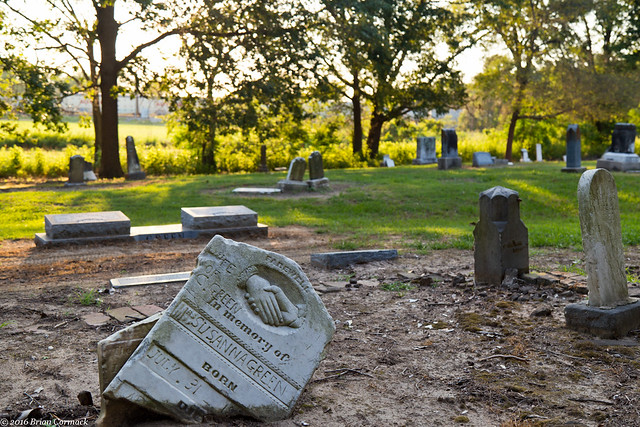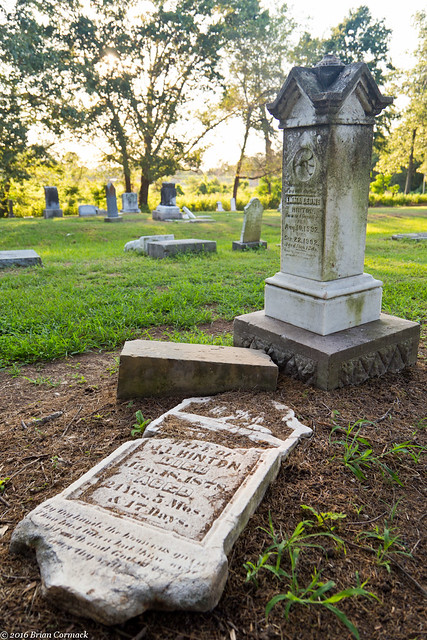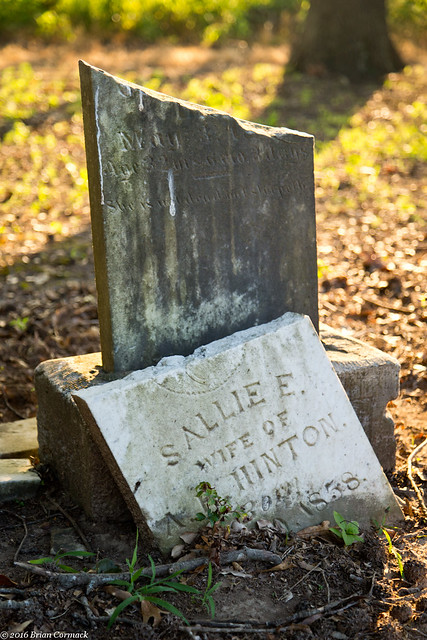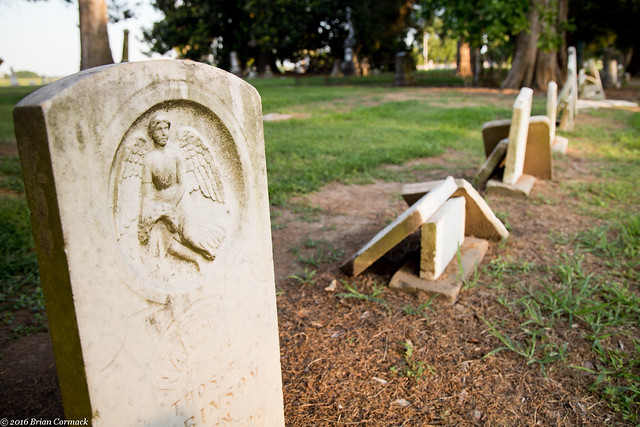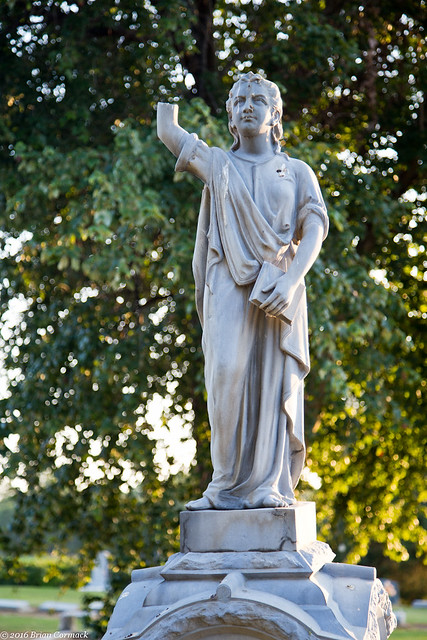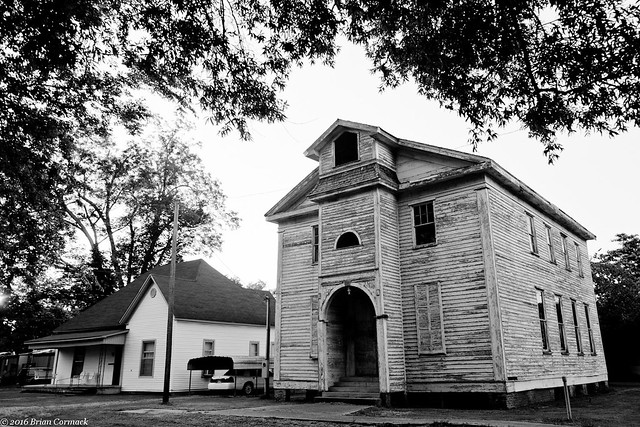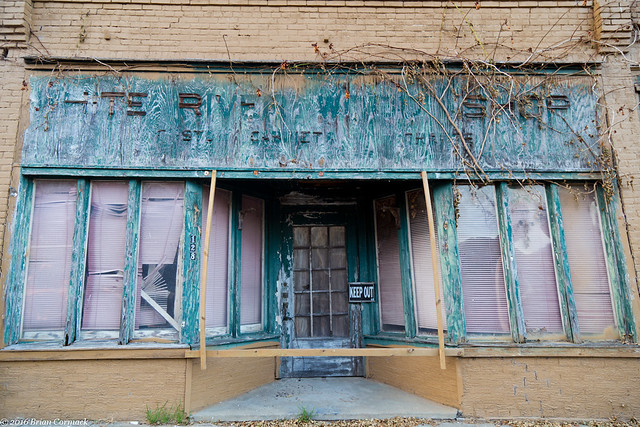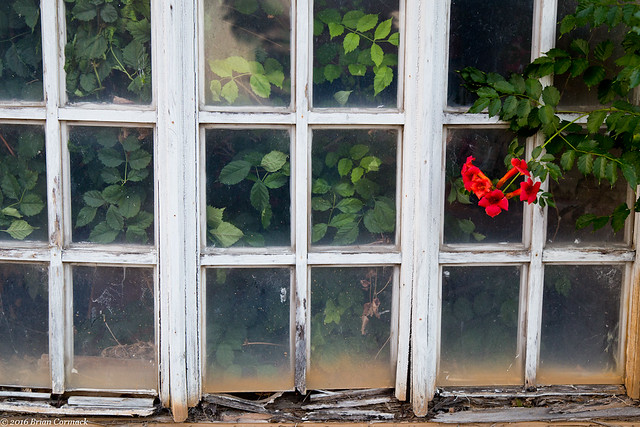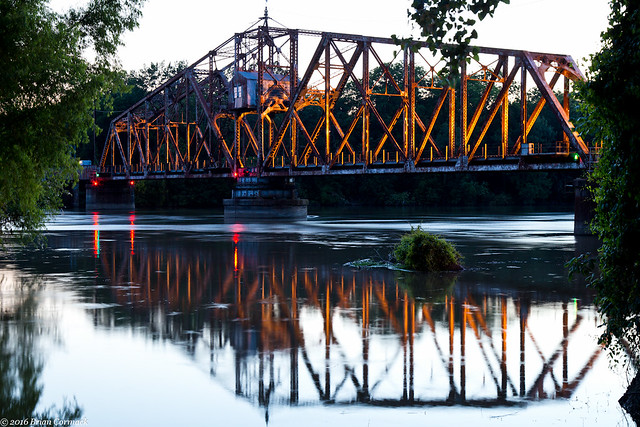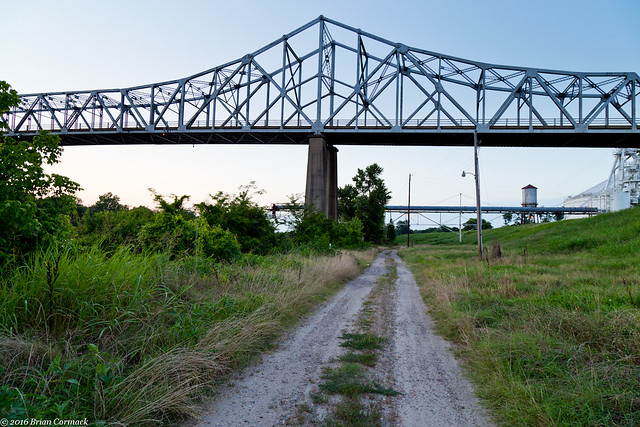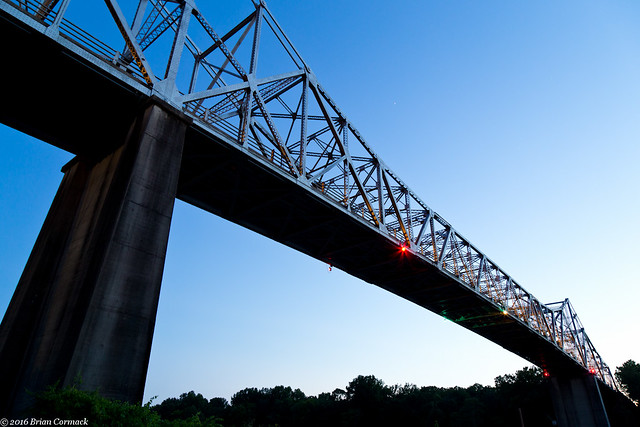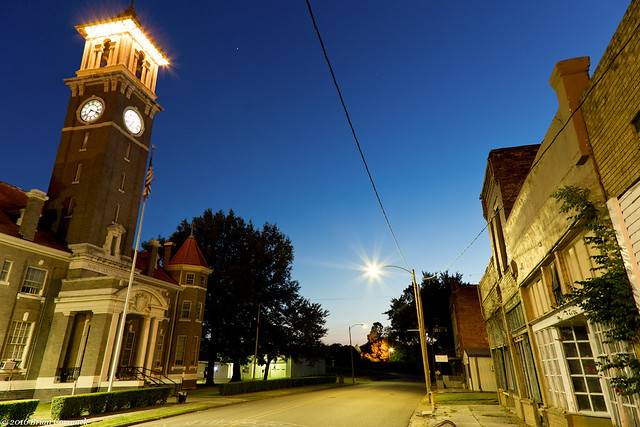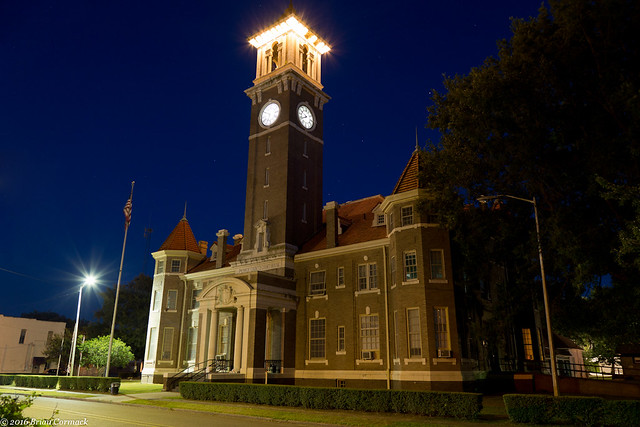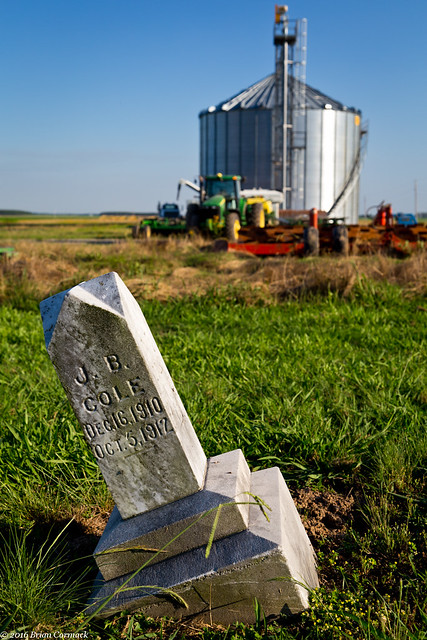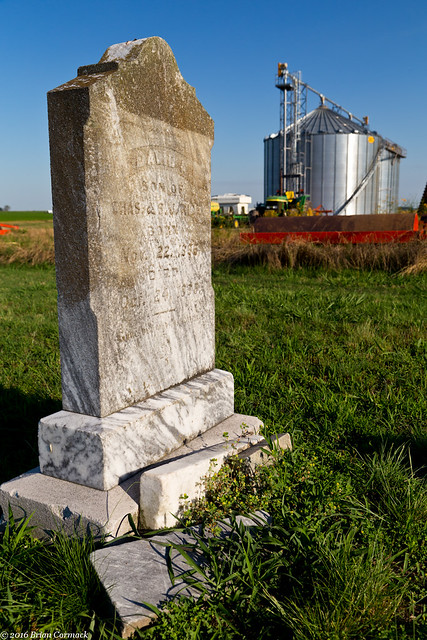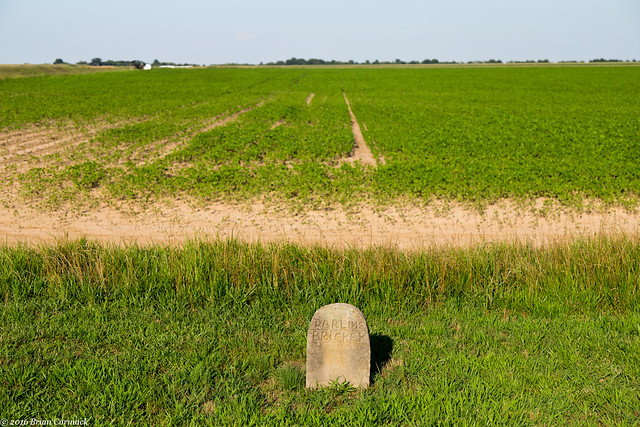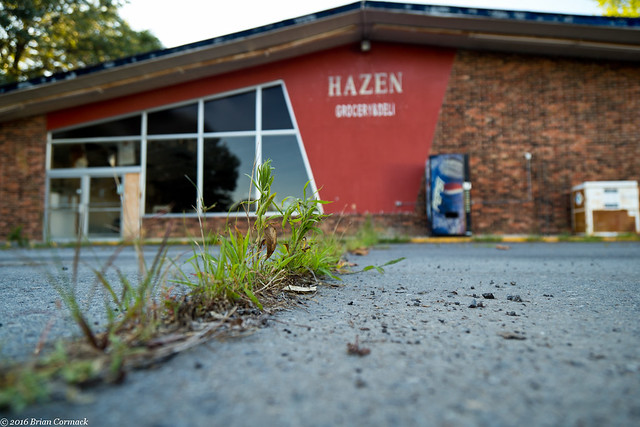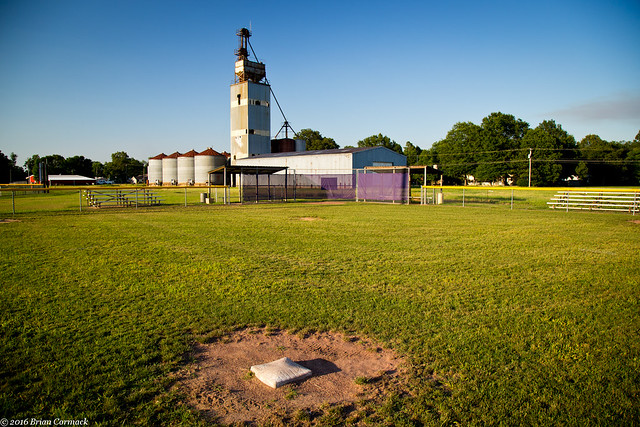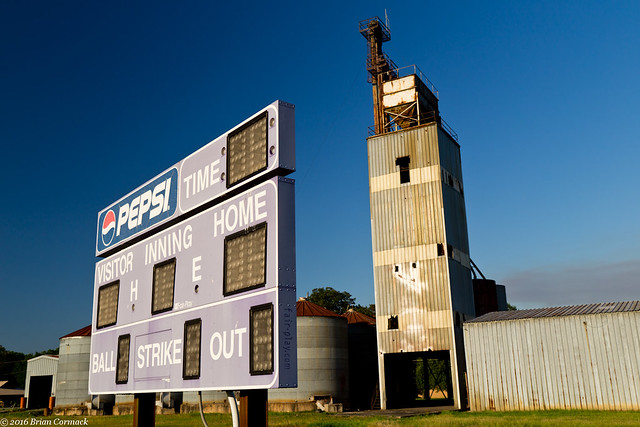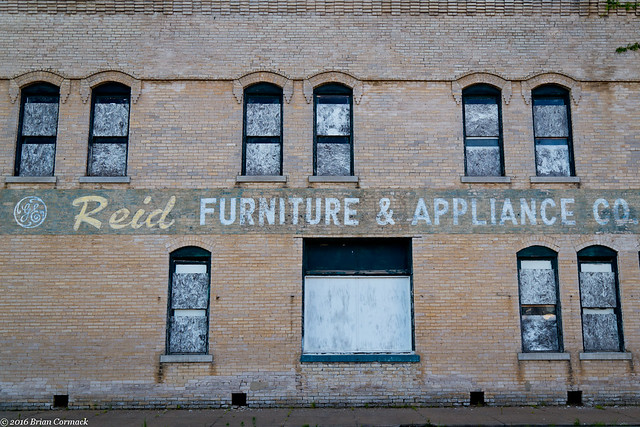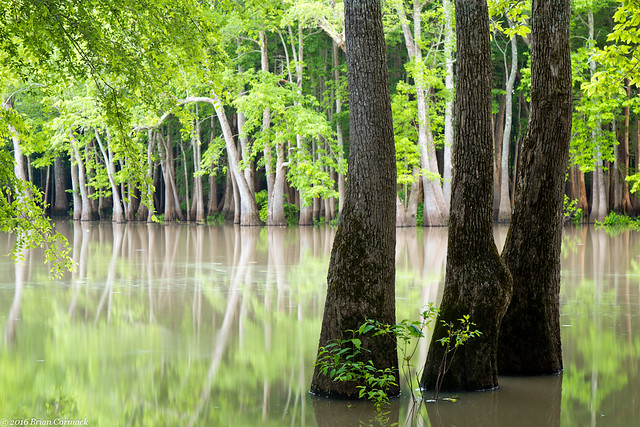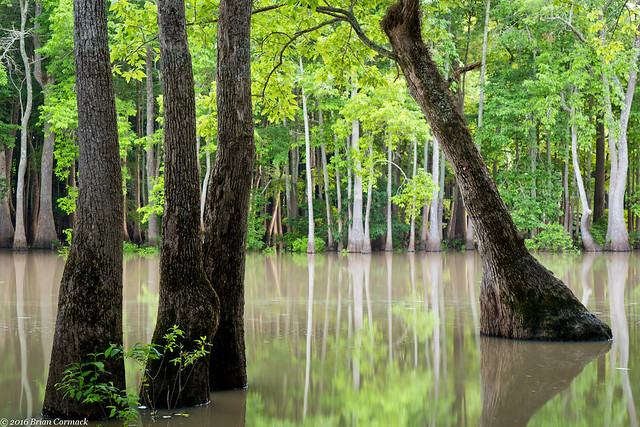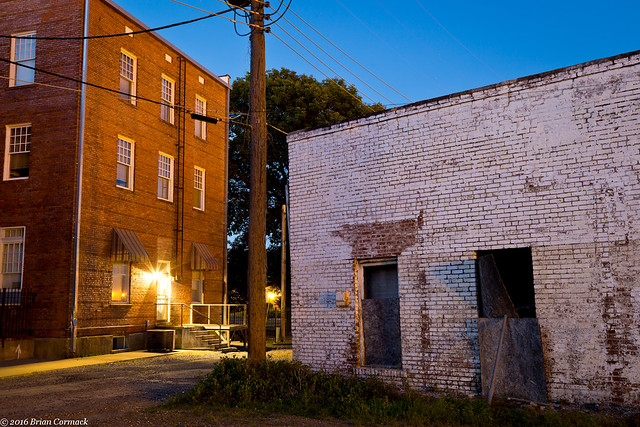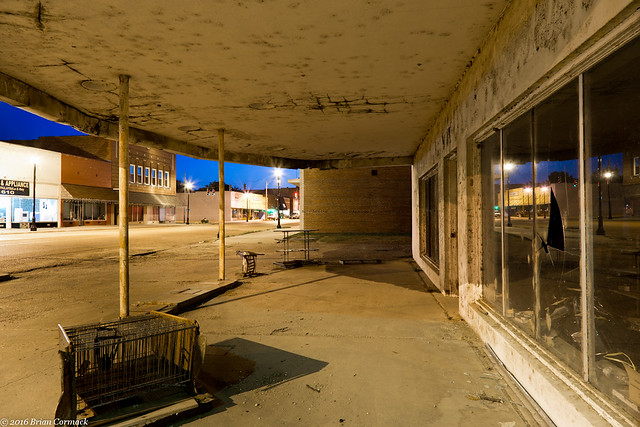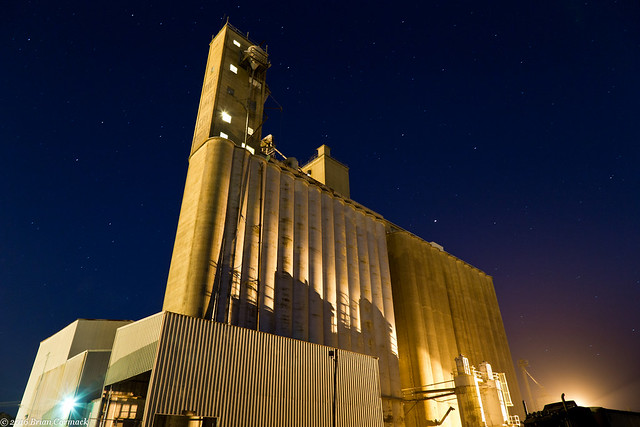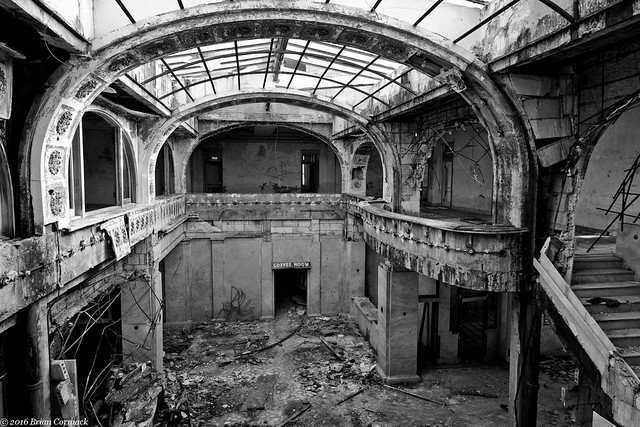
For a comparison, this is what the hotel lobby looked like in 1922:
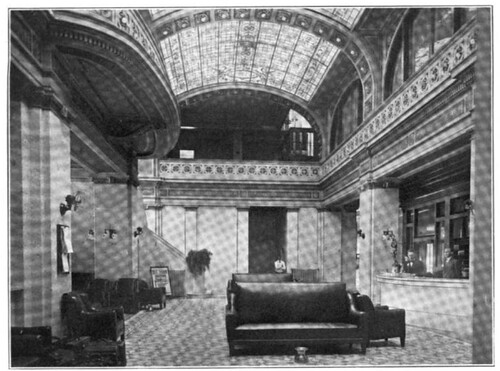
I managed to get permission to go inside the hotel and take a few pictures. Despite the advanced decay, the architecture of the lobby is still striking. The hotel was designed by George R. Mann, the architect who also designed the Arkansas State Capitol building. According to the Encyclopedia of Arkansas, the “The interior of the Hotel Pines is notable for its first-floor ceilings, which are coffered and supported by a full entablature, mounted on pink marbleized columns. Its lobby is a barrel vault supported by gray marble columns and pilasters. The lobby’s ceiling is a curved, multicolored lead stained-glass skylight. Over the main entrance to the lobby is a bowed balcony supported by a large decorative bracket. Walls are furnished in gray marble, and the floors are mosaic ceramic tile.”
The lobby is four thousand square feet, and when it opened the lobby also featured phone booths, newspaper and cigar stands and a haberdashery.
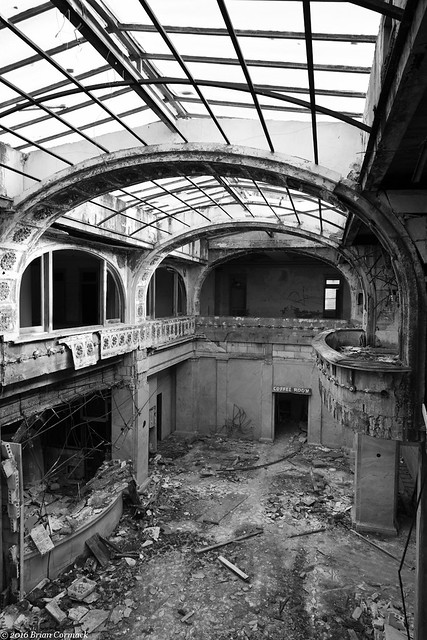
The hotel cost $350,000 to build, which was a considerable sum of money in the early 1900s. The hotel’s main clientele were rail travelers, and the hotel even offered porter service that carried guest’s luggage to the nearby train station.
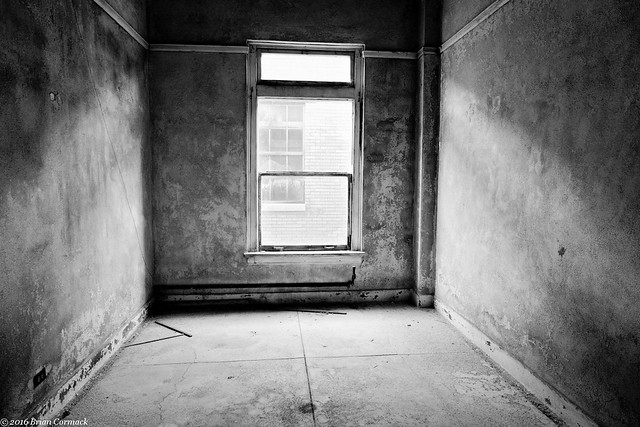
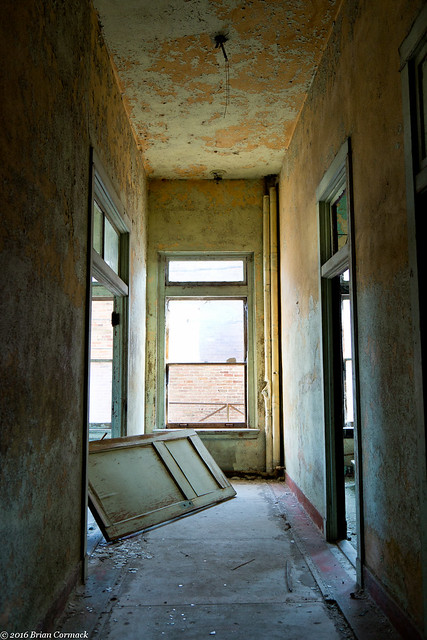
The hotel was also an important gathering place for people in Pine Bluff. The hotel hosted civic and business meetings, banquets, dances and fancy society balls.
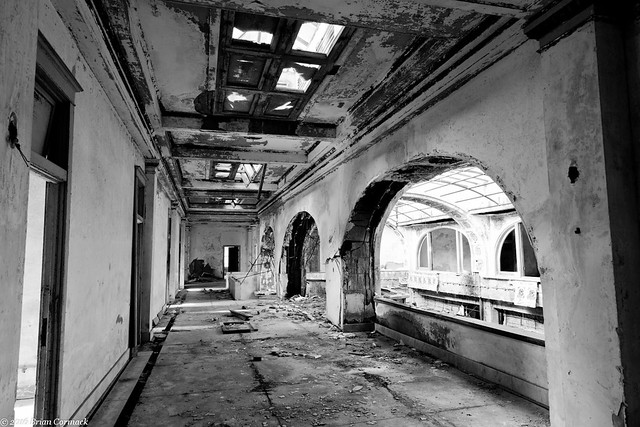
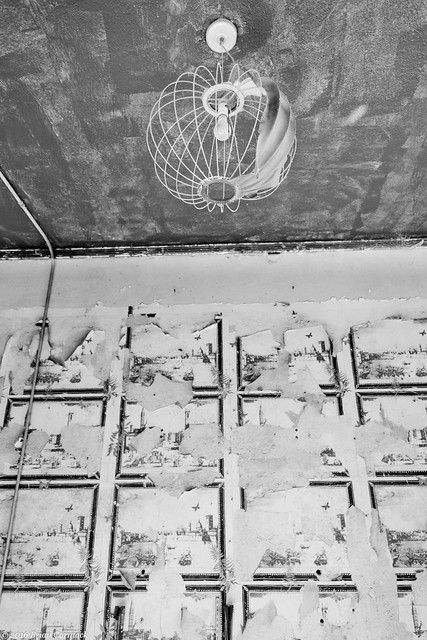
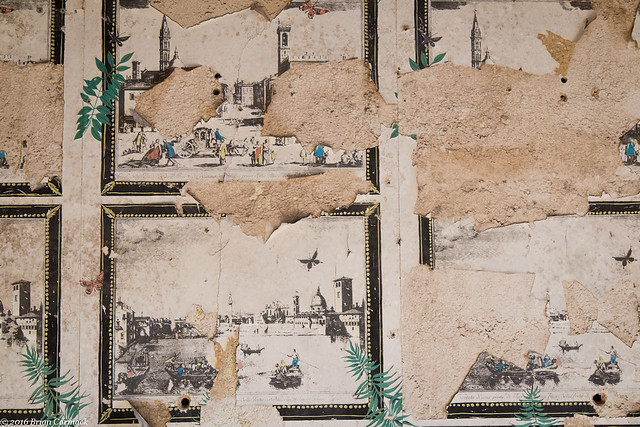
The six story hotel had 168 rooms when it opened. In 1922, it cost anywhere between $4.00 and $7.50 a night to stay there (the cost depended on how many guests were in the room, and the number of meals they would take). The rooms differed in size throughout the hotel, some were large suites while other were dorm-style rooms with a shared bathroom. This is a bathtub in one of the rooms on the second floor.
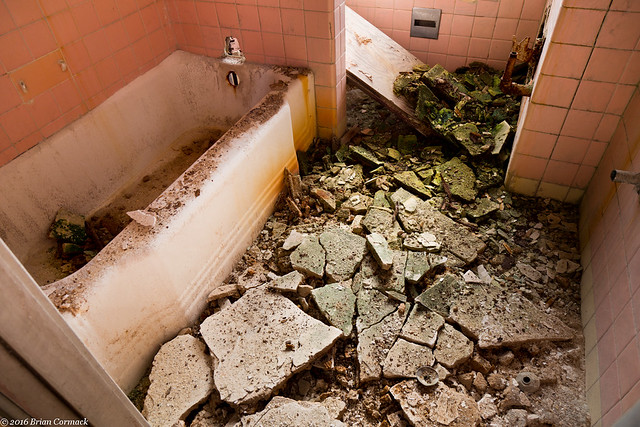
And a few more shots from the second floor:
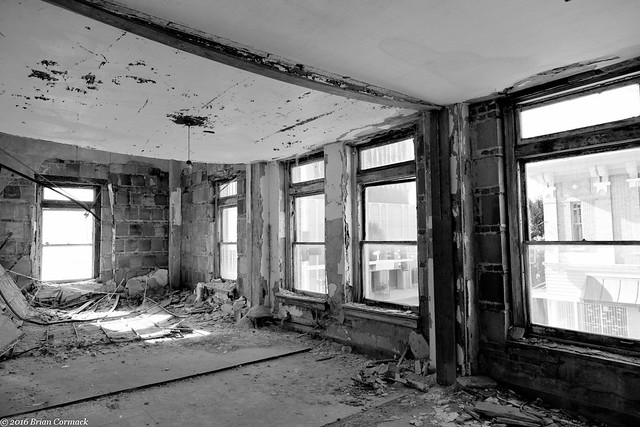
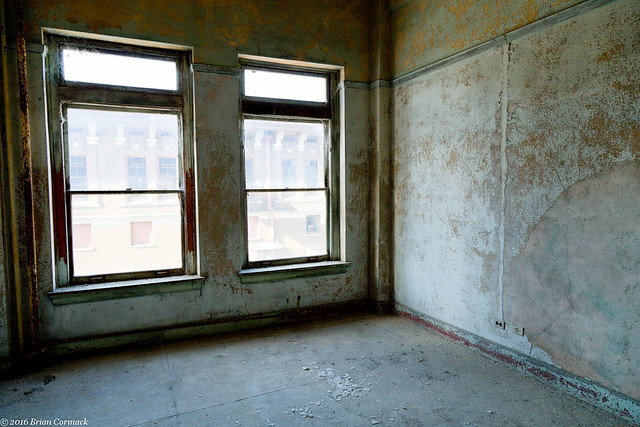
I headed back down to the first floor and went to the dining room, which is just off to the side of the lobby.
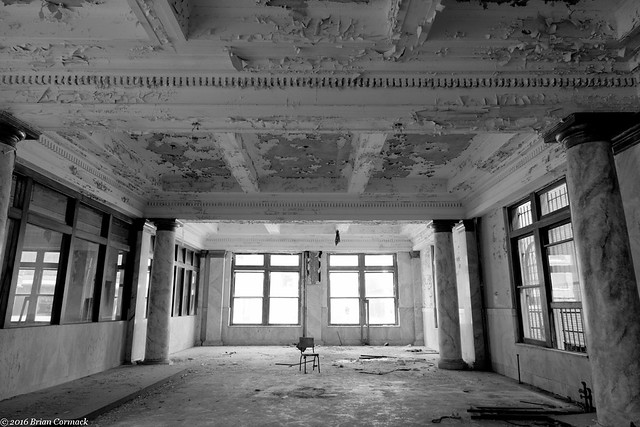
For a comparison, this is how the dining room looked in 1922:
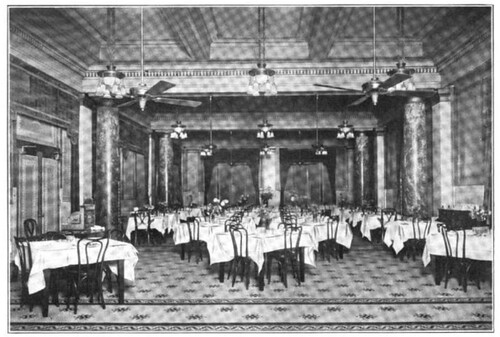
In 1922, a typical dinner at the hotel included your choice of mustard chow, cream of shrimp, fried catfish, pineapple fritters, Spanish beef stew or braised spareribs. For sides there was mashed potatoes, garden peas, steamed rice or shredded lettuce with egg. Dessert included fruit jello, hot mince meat pie or hot corn dodgers. To drink, you could wash it down with coffee, tea, milk, buttermilk or a stein of Budweiser for 20 cents.
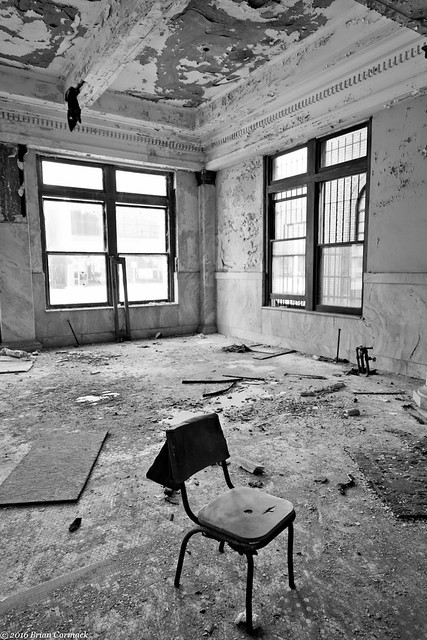
In 1968, passenger rail service stopped in Pine Bluff. The hotel closed two years later in 1970 and has been vacant ever since.
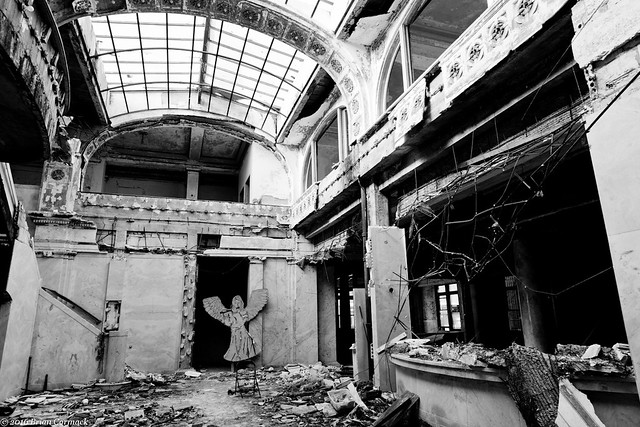
This is the bar in the coffee room, located just off of the hotel lobby.
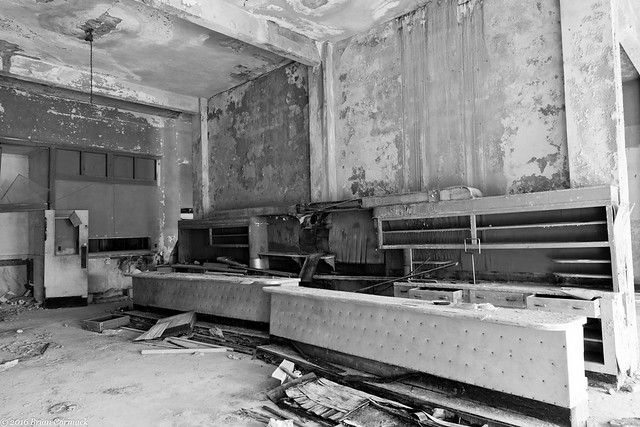
In 1990, the city of Pine Bluff considered tearing down the hotel. But it was saved and a nonprofit group called Citizens United to Save the Pines bought the building in 1991. They spent twelve years renovating the hotel. The stained glass in the lobby was cleaned and repaired, and the roof and all the windows were replaced.
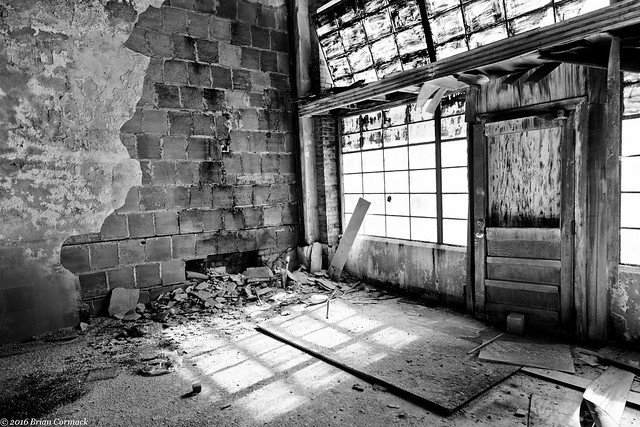
In 2003 the hotel was then sold to a developer who planned on spending $3 million to finish the renovations. But those plans fell through, and the hotel slid further into neglect. The glass skylight is broken, so water pours into the lobby every time it rains. Chunks of plaster have fallen from the walls and ceilings. The fine marble in the lobby is cracked and broken.
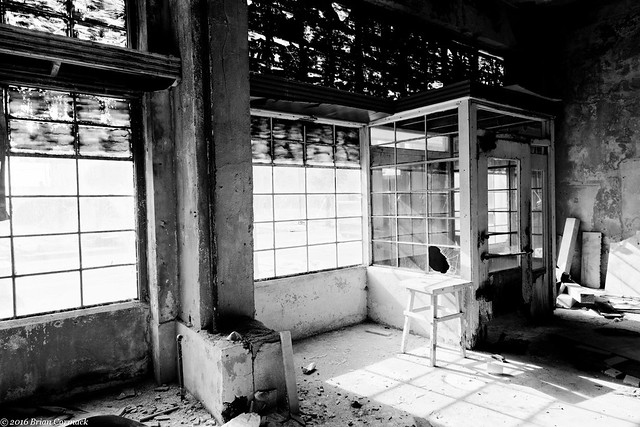
The building is currently for sale, and reportedly there have been a few perspective buyers. One idea being floated is for the building to become part of the University of Arkansas at Pine Bluff, who would convert the hotel into dorms and for space for the art department.
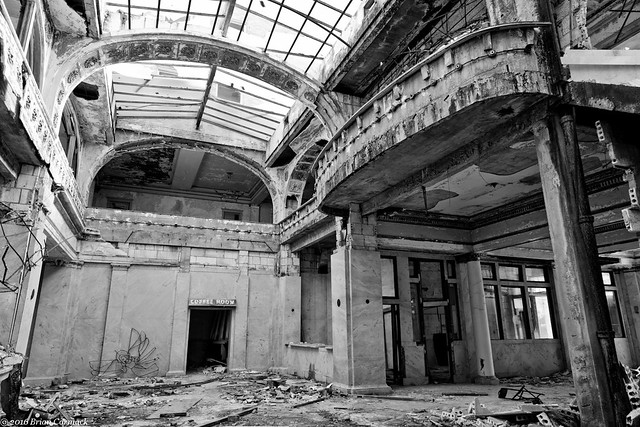
If the building isn’t going to be renovated, then maybe enough work can be done to prevent any further damage. In recent years, several buildings in downtown Pine Bluff have collapsed, including some right across the street from the Pines Hotel. If nothing is done, the hotel will join their fate, either through continued decay or from demolition. It would be a shame for Pine Bluff to lose another landmark, especially a building that has served as an anchor on Main Street for over a century.

